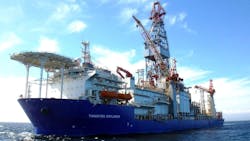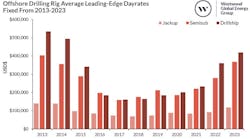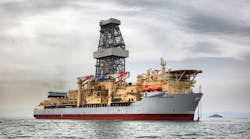Editor's note: This Vessels/Rigs column first appeared in the March-April 2024 issue of Offshore magazine. Click here to view the full issue.
By Bruce Beaubouef, Managing Editor
This year’s drilling contract market is off to a seemingly slow start, with fewer floater contract fixture announcements hitting the headlines compared to last year. Evercore ISI’s March 2024 Offshore Oracle report provides some comparative analysis on this front.
To compare, between March 2023 and December 2023, an average of eight semisubmersible fixtures and five drillship fixtures were announced each month. In contrast, an average of two semisubmersible fixtures and six drillship fixtures have been announced each month year to date in 2024.
But while the fixture count for floaters in the first quarter was down, approximately 30 rig-years were added to the backlog, implying a similar level of rig years added in the previous two quarters. Notable long-term fixtures (approximately three-plus years) awarded in 1Q 2024 included the Valaris DS-4 (Petrobras), Vantage Drilling’s Tungsten Explorer (TotalEnergies), and COSL’s Nan Hai Ba Hao (Petrobras).
The firm says that it is seeing material extensions in contract lengths and increases in average dayrates for ultra-deepwater floaters, primarily due to low availability for sixth and seventh-generation drillships, slower than anticipated reactivations, and a lack of newbuilds, while operators continue to scramble for assets to lock in long-term contracts. Evercore says that average dayrates for drillships in March 2024 reached $489,000/day, up 76.6% year-over-year, and “we expect further upside in UDW dayrates as the long-duration offshore upcycle continues.”
Meanwhile, regions offshore Africa are expected to lead this year’s frontier drilling campaigns, says Westwood Global Energy Group. The firm says that it expects 60-65 high-impact wells to be drilled in 2024, similar to last year’s activity.
About 20 of the wells should be around Africa, led by interest in the frontier Orange basin offshore southern Africa. Here, Portugal’s Galp has already proved oil with its deepwater Mopane-1X well of Namibia, and further deepwater wells could follow later in the year in the South African sector of the basin chasing equivalent Cretaceous plays. To the north, Exxon Mobil could drill the first ever exploration well in the Angolan Namibe basin and the company is also looking to drill in Egypt’s offshore Herodotus basin.
Regions offshore South America are the second-leading frontier hotpot. Westwood senior analyst Andrew Jackson and wildcat exploration research manager Jamie Collard foresee an increasingly active period ahead offshore South America, with potentially about 15 high-impact wells compared with just nine in 2023.
Wells to watch include planned frontier basin tests in Colombia and Argentina, while in Brazil the focus should be as before on the presalt Santos and Campos basins. Petronas and Petrobras will likely drill three commitment wells in the outboard presalt carbonate play. While in the inboard presalt, bp could drill its first operated well in Brazil since 2013. Petrobras will also seek to test the deepwater potential of the Potiguar basin on Brazil’s Equatorial Margin.
In Guyana, Exxon Mobil and its partners in the Stabroek Block will step up exploration of the gas-prone southeastern areas, Westwood’s consultants claim, but there could also be higher-risk wells outside of the core fairway. Offshore neighboring Suriname, the Petronas-Exxon Mobil joint venture will likely drill more wells.
Elsewhere, there should be notable frontier test wells in the Sabah Trough offshore Malaysia and more drilling on the emerging late Oligocene play in Indonesia’s North Sumatra basin.





